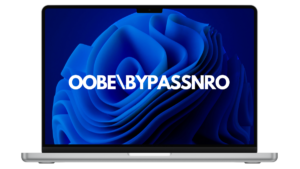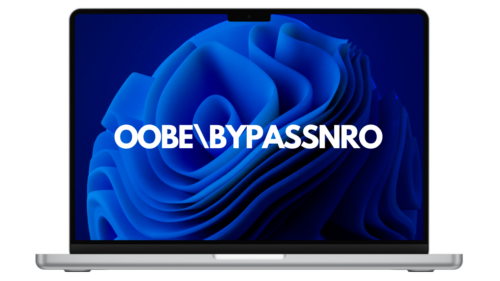What Is Malware?
Malware, short for malicious software, refers to any software designed to harm, exploit, or otherwise compromise the functionality, security, or data of a computer system. It includes a wide variety of harmful software types, including viruses, worms, trojans, ransomware, spyware, adware, and more.
Malware can infiltrate systems through various means, such as email attachments, malicious websites, infected software downloads, or exploit vulnerabilities in existing software.
How Malware Works
Malware exploits weaknesses in a system to gain unauthorized access or cause damage. Upon execution, malware may perform actions such as corrupting files, stealing sensitive information, spying on user activity, or providing remote access to attackers.
Different types of malware use different techniques: viruses attach themselves to clean files and spread throughout the system, worms replicate across networks, trojans disguise themselves as legitimate software, and spyware monitors user behavior. Malware often operates stealthily to avoid detection by security software.
What Is Ransomware?
Ransomware is a type of malware that encrypts the victim’s data or locks them out of their system, demanding a ransom payment to restore access. Unlike other types of malware that may seek to steal data or cause damage, ransomware’s primary objective is financial gain.
Attackers typically demand payment in cryptocurrencies to maintain anonymity. Ransomware attacks can target individuals, organizations, and even critical infrastructure, causing significant disruption and financial loss.
How Ransomware Works
Ransomware typically infiltrates a system through phishing emails, malicious downloads, or exploit kits. Once inside, it quickly encrypts files and displays a ransom note, instructing the victim on how to pay the ransom to regain access to their data. Some ransomware variants also threaten to publish the victim’s data publicly if the ransom is not paid—this is known as double extortion.
Modern ransomware often uses sophisticated encryption algorithms that are nearly impossible to break without the decryption key, leaving victims with few options but to lose their data. Law enforcement and security experts generally advise companies not to pay the ransom.
- Deploy behavioral analysis tools: Utilize advanced endpoint detection and response (EDR) solutions that use behavioral analysis to detect unusual activity patterns indicative of malware or ransomware, even if the specific threat is unknown.
- Implement network segmentation: Divide your network into isolated segments to limit the spread of malware or ransomware. Critical systems should be isolated from less secure areas to contain potential breaches.
- Use honeypots: Deploy honeypots or decoy systems that mimic vulnerable devices. These can attract and identify attackers early, giving you a heads-up on potential breaches.
- Monitor for unusual outbound traffic:Configure your network monitoring tools to flag and investigate unusual outbound traffic patterns, which can indicate data exfiltration attempts by malware.
- Use immutable backups: Store backups in an immutable format, meaning they cannot be altered or deleted. This ensures that your backup data is safe from ransomware attacks targeting backup files.
Malware vs Ransomware: The Key Differences
The following table summarizes the key differences between malware and ransomware. We provide more detail about each difference below.
1. Goal
Malware can have a different primary goal based on its type. Malware may aim to steal sensitive information, disrupt normal operations, spy on users, or corrupt data. For example, spyware monitors user activities to gather personal or corporate data, a virus might aim to disrupt system operations, and a trojan aims to achieve persistent access to a system.
Ransomware’s goal is straightforward and singular: to extort money from its victims. Ransomware attackers achieve this by encrypting the victim’s data and demanding a ransom for the decryption key, creating an immediate and pressing need for the victim to comply.
2. Impact
Malware’s impact is varied and can range from mildly annoying to catastrophic. Adware might display unwanted advertisements, causing annoyance but little harm. More severe forms like rootkits can provide attackers with ongoing access to a system, leading to prolonged damage and data theft.
Ransomware has a more uniform and acute impact. It renders critical data and systems inaccessible almost instantly, halting operations and potentially leading to substantial financial and reputational damage. For organizations and critical services, this can mean the difference between operating normally and complete operational shutdown.
3. Delivery Method
Both malware and ransomware can infiltrate systems through similar vectors, such as phishing emails, malicious website downloads, or exploiting software vulnerabilities.
Ransomware attacks often use highly sophisticated and targeted phishing campaigns. These campaigns use detailed social engineering tactics to trick users into downloading the ransomware payload, often masquerading as legitimate files or communications from trusted sources.
Malware, while also using these methods, often spreads through more diverse means, including removable media like USB drives, peer-to-peer file sharing, and even legitimate software bundles.
4. Motive
Malware is created for a variety of reasons. Some malware is designed for espionage, collecting sensitive information from governments or corporations. Others are built for sabotage, disrupting operations and causing damage to target systems. The motive can be political, personal, or financial.
Ransomware’s motive is primarily financial. The attackers behind ransomware are usually cybercriminals seeking to make quick profits by holding data hostage and demanding ransom payments, typically in cryptocurrencies to maintain anonymity and evade law enforcement.
5. Ease of Removal
Malware’s ease of removal depends on its type and the sophistication of the infection. Many forms of malware can be detected and removed by modern antivirus and anti-malware software. However, some malware, like rootkits, can be deeply embedded in the system and require more complex removal procedures, possibly involving reinstallation of the operating system.
Ransomware poses a unique challenge. Even if the ransomware itself is removed, the encrypted data remains inaccessible without the decryption key. This often leaves victims with few options: restore data from backups if available, use data recovery services, or pay the ransom, which is risky and not guaranteed to result in data recovery.
6. Variety
Malware covers a broad spectrum of malicious software, each with distinct behaviors and objectives. This includes viruses, worms, trojans, spyware, adware, rootkits, and more. Each type functions differently and poses different threats to the system.
Ransomware, as a subset of malware, has a more focused purpose. However, there are numerous variants of ransomware, with different encryption methods and ransom demands. Some well-known ransomware families include WannaCry, Petya, and Ryuk.
6 Ways to Prevent Malware and Ransomware in Your Organization
Organizations can implement the following measures to protect themselves against ransomware and other malware threats.
1. Keep Operating Systems and Software Up to Date
Software developers frequently release updates that patch security vulnerabilities attackers could exploit. By keeping your system up to date, you ensure that these vulnerabilities are addressed promptly. This applies not only to the operating system but also to all installed applications, including web browsers, plugins, and antivirus software.
Setting up automatic updates can help manage this process and ensure you don’t miss critical patches. Additionally, regularly check for firmware updates for your hardware devices, as these can also contain important security improvements.
2. Enable Multi-Factor Authentication
Multi-factor authentication (MFA) significantly enhances the security of your accounts by requiring multiple forms of verification. This typically involves something you know (a password) and something you have (a mobile device) or something you are (a fingerprint or facial recognition). Even if an attacker obtains your password, they will still need the second factor to gain access.
MFA can be implemented using text message codes, authentication apps, hardware tokens, or biometric verification. Many online services, including email providers, social media platforms, and financial institutions, offer MFA options. Enabling MFA wherever possible provides a critical additional layer of security.
3. Train Employees on Email Security Practices
Phishing emails are one of the most common vectors for these threats, making it essential for staff to recognize and avoid them. Start by educating employees on identifying phishing attempts. Teach them to look for red flags such as suspicious sender addresses, urgent or threatening language, unexpected attachments, and requests for sensitive information.
Demonstrate how hovering over links can reveal their true destination, helping to identify fraudulent URLs. Encourage a culture of caution and verification. Employees should be advised to verify any unexpected or unusual email requests through a separate communication channel, such as a phone call to the sender. This can prevent many phishing attacks from succeeding.
4. Perform Regular Backups
Ensure that backups are performed on a consistent schedule and stored in a secure location, such as an offline external drive or a reliable cloud service. This practice helps ensure that you can recover your data without paying a ransom in case of an attack.
It’s also important to test the backups periodically to confirm that they are functioning correctly and that you can successfully restore the data. Implementing a versioning system, where multiple versions of files are saved, can also help recover from ransomware by restoring an uninfected version of the file.
5. Use Anti-Malware Software
Anti-malware programs can detect, prevent, and remove malicious software before it can cause harm. These tools continuously scan the system for suspicious activities, files, and behaviors that may indicate a malware infection.
A good anti-malware solution offers real-time protection, which actively monitors your system and blocks threats as they occur. Regular scans should be scheduled to ensure that any hidden malware is detected and removed promptly. These programs should be kept up to date to recognize the latest threats, as cybercriminals continually develop new malware variants.
Additionally, consider using anti-malware software that provides web protection features, such as blocking access to known malicious websites and scanning downloads for malware. Many advanced solutions also offer email protection to prevent phishing attacks and malware-laden attachments from reaching users’ inboxes.
6. Use Email Security Solutions
Advanced email security systems can filter out spam, detect and block phishing attempts, and scan attachments for malicious content before they reach your inbox. Features like link protection can analyze URLs in real-time, blocking access to known malicious sites.
Consider using encryption for sensitive emails to prevent interception by attackers. Training employees to recognize and report suspicious emails can improve the effectiveness of your email security measures. Regularly review and update your email security settings to adapt to new threats and ensure ongoing protection.
Malware Prevention with Perception Point
Perception Point uses AI to fight AI to protect the modern workspace against malware and other cyber threats across email, browsers, and SaaS apps by uniquely combining an advanced AI-powered threat prevention solution with a managed incident response service. By fusing GenAI technology and human insight, Perception Point protects the productivity tools that matter the most to your business against any cyber threat.
Patented AI-powered detection technology, scale-agnostic dynamic scanning, and multi-layered architecture intercept all social engineering attempts, file & URL-based threats, malicious insiders, and data leaks. Perception Point’s platform is enhanced by cutting-edge LLM models to thwart known and emerging threats.
Reduce resource spend and time needed to secure your users’ email and workspace apps. Our all-included 24/7 Incident Response service, powered by autonomous AI and cybersecurity experts, manages our platform for you. No need to optimize detection, hunt for new threats, remediate incidents, or handle user requests. We do it for you — in record time.
Malware, short for malicious software, refers to any software designed to harm, exploit, or otherwise compromise the functionality, security, or data of a computer system. It includes a wide variety of harmful software types, including viruses, worms, trojans, ransomware, spyware, adware, and more.
Malware exploits weaknesses in a system to gain unauthorized access or cause damage. Upon execution, malware may perform actions such as corrupting files, stealing sensitive information, spying on user activity, or providing remote access to attackers.
Ransomware is a type of malware that encrypts the victim’s data or locks them out of their system, demanding a ransom payment to restore access. Unlike other types of malware that may seek to steal data or cause damage, ransomware’s primary objective is financial gain.
Ransomware typically infiltrates a system through phishing emails, malicious downloads, or exploit kits. Once inside, it quickly encrypts files and displays a ransom note, instructing the victim on how to pay the ransom to regain access to their data. Some ransomware variants also threaten to publish the victim’s data publicly if the ransom is not paid—this is known as double extortion.
Organizations can implement the following measures to protect themselves against ransomware and other malware threats.
1. Keep Operating Systems and Software Up to Date
2. Enable Multi-Factor Authentication
3. Train Employees on Email Security Practices
4. Perform Regular Backups
5. Use Anti-Malware Software
6. Use Email Security Solutions









